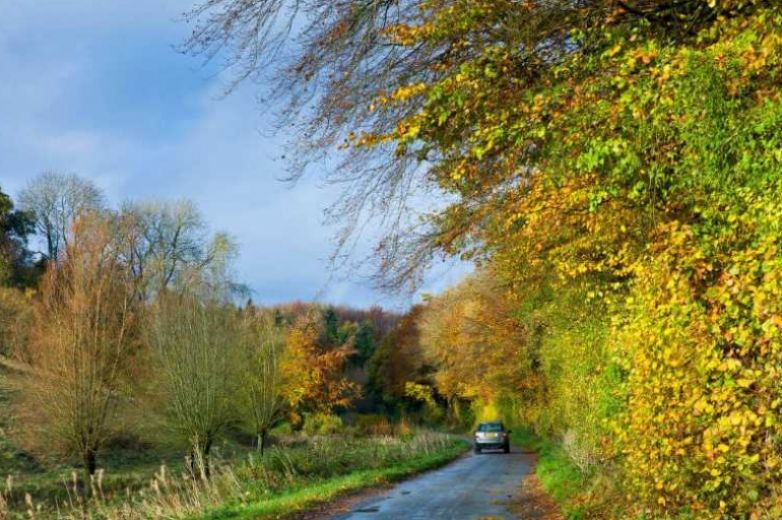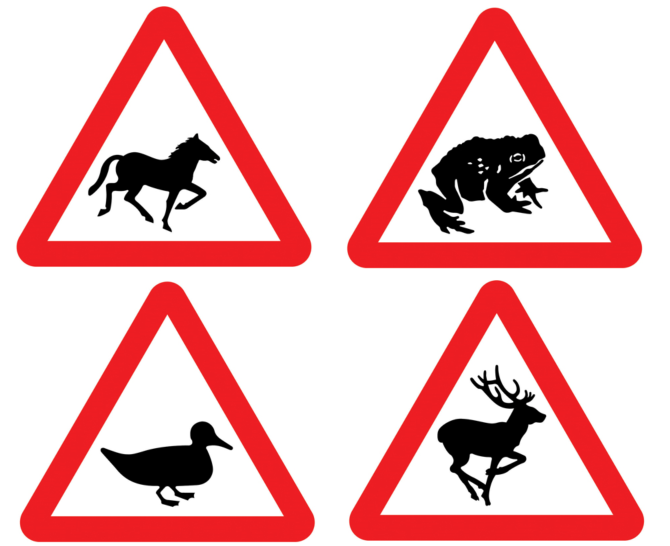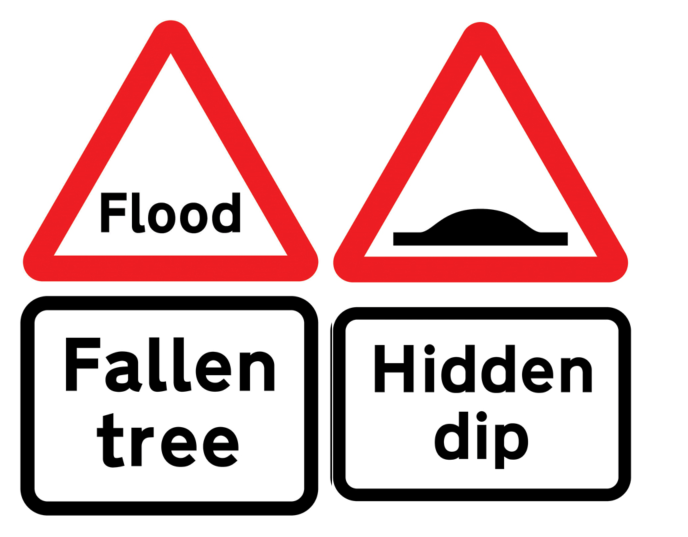Whether you are learning to drive or an experienced driving planning your next trip which uses country roads, this guide will help keep you, your passenger and other road users safe.
Read our latest road safety guide below.
What is a country road?
A country or rural road is often defined by an area away from a town or city, where the road often lacks any markings, is often tighter, and is found in the countryside.
UK towns and cities are often heavily signposted and marked, with higher levels of traffic and other road users – with greater visibility of your surroundings.
Although motorways, dual carriageways and city streets come with their own challenges, rural roads can be difficult to navigate.
Helpful tips for learner drivers
If you have recently passed your test and are daunted by the thought of driving on country roads, here are some helpful tips for you.
Although some new drivers may be scared of driving in rural areas – especially if it is something new to them – remain calm and drive at a relaxed pace to avoid any issues on the journey.
Overcoming your fear of driving will lead to a more pleasant and safer experience.
Although you may have passed your test and are ready to head out onto country roads, here are 17 things your driving instructor never taught you that may come in handy.
- The Highway Code – common UK road signs and what they mean
- Are rural roads more dangerous than urban ones?
- Scared of driving – how to overcome driving fear
National speed limit
The speed limit on country roads in the UK is often the national speed limit of 60 mph. This is defined by the white, circular sign with a thick black diagonal line.
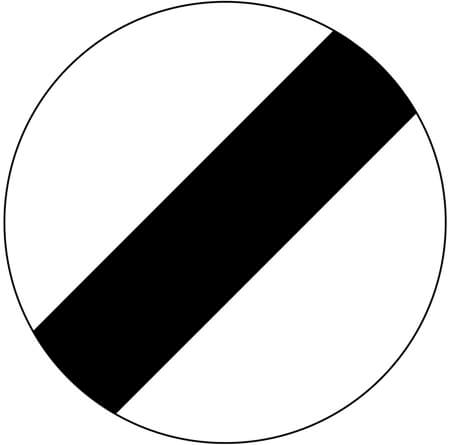
Of course there are other speed limits that will be displayed by the red and white signs with a number on – and you should adhere to these where instructed.
Although there are long stretches of single-carriageway, tight, national speed limit roads in rural areas, it is advisable to drive slower due to the various risks you will face.
Don’t treat the speed limits as a target, as this is often not a safe speed to be travelling at. Whether you are learning to drive, recently passed, or are looking at taking your next trip down some country roads – be aware of your cars stopping distance in relation to the speed you are travelling.
This guide will look at the dangers you could face on the roads, but a car’s stopping distance is an important factor in all of them.
Road signs
Before you set off on your journey through the UK’s winding country roads, it would be a good idea to familiarise yourself with the common road markings and road signs that you will come across on your journey.
However, if you are new to rural roads, there are several signs you may have not seen before.
Animal crossings
Horse riders or horse and carriage
.png)
Farm vehicles ahead - warning of slow traffic
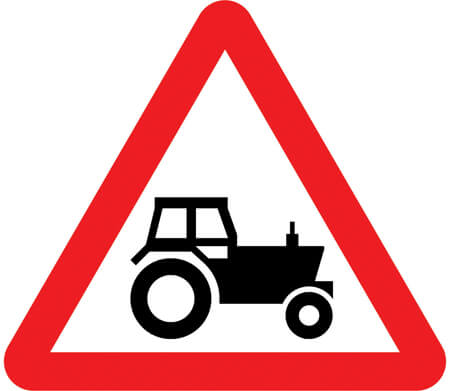
Low bridge - larger vehicles in centre of road
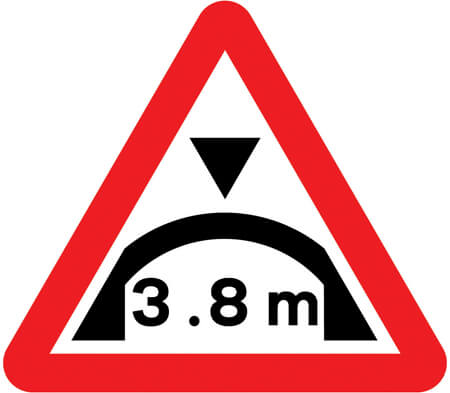
SOS phone and parking relief area
.jpg)
Obstructions ahead
Road narrowing ahead
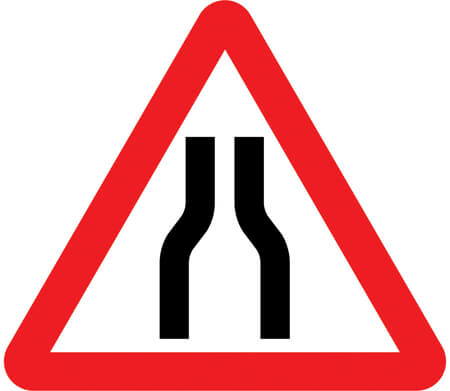
There are many more that you may come across on your journey! Although most are self explanatory, the best way to prepare yourself is to check out the Highway Code's official list of road signs.
*All sign images are Crown Copyright. Contains public sector information licensed under the Open Government Licence v3.0.
Overtaking
On roads that have a higher level of traffic, the overtaking opportunities are clearly marked and signposted.
However, on country roads overtaking can be challenging and dangerous.
Overtaking on single-lane roads can be daunting for drivers, but it’s an important manoeuvre to master safely and confidently on order to travel in the UK’s rural areas.
It is illegal to overtake if there are signs or road markings clearly prohibiting it, or if it’s done in an unsafe, reckless, or uncontrolled way. Examples of this include when you don’t have clear visibility of the road ahead- such as before a bend - or in difficult weather conditions. Both common challenges on these types of roads.
You can overtake a horse rider but do so at a much lower speed. Give them as much room as you safely can – ideally more than you would a car. Turn down the volume on your radio, do not rev your engine, honk your horn, or speed up quickly behind them – as these are all things that could easily spook the horse and cause an accident. Make sure to also keep watch out for signals from the rider to slow down or stop.
Similarly, make sure to give at least the same room as you would do car for cyclists. As with all overtaking manoeuvres make sure to only attempt when it’s safe to do so and clearly indicate your intentions.
Another common reason for overtaking on country roads is slow moving traffic on a single carriageway or tight road that you may have to pull over to let cars coming from the other direction pass.
Like the above obstructions and fellow road users – drive slowly and only pass when it is safe to do so. Use your indicators and mirrors to make sure you are clear to proceed with your manoeuvre.
Overtaking safely on the road is an important part of driving in the country, due to the limited space and slow moving road users.
The different types of vehicles you face in the country can often be a lot larger and block the view of the road ahead.
Tractors, combine harvesters, trucks, balers, sprayers, and other farmyard vehicles can all create challenging driving conditions. It is important to remember to not break any speed limits when overtaking and only make the move when it is safe to do so, and you can see all road users.
And no matter the type of road, there have been some recent changes to the Highway Code which has changed the priority of road users. Keep this in mind when you make any manoeuvre on your journey.
For any other rule, check out this guide on the UK’s Highway Code.
- Speed cameras – how they work
- Speeding fines – how much you have to pay
- Speed limits in the UK: know the laws
What should you be prepared for on rural roads?
Once you know that you will be travelling down some country roads in the near future, there are several unique encounters on the road that are unique to rural areas.
Driving on rural roads can be a joy – incredible views of the British countryside, idyllic villages, and hidden gems for you and the family. However, be aware of the hazards that lay ahead.
Although the government’s 5G reception roll out is underway, many parts of the UK have difficulties with phone reception. Don’t worry, if you break down follow these steps to make sure you are safe.
Are you prepared for your next journey? Check out the RAC’s Breakdown Cover.
You may be on of the most picturesque roads in the UK on your next rural journey – however, the quality of what is underneath the wheels is often a cause of concern for drivers.
Flooding and adverse weather conditions can make them incredibly dangerous and unpredictable to drive on – especially when there isn’t a lot of room to work with at times in relation to other road users.
The roads themselves are often not kept in good condition – often littered with potholes, cracks, and uneven cambers. Following strong winds, they can be covered or even blocked by debris, which not only causes damage to the roads, but also can result in traffic jams.
And debris isn’t the only challenge that may be obstructing the road.
With no pavement or footpaths, you will often encounter people and their pets in the road. Due to the many farms, you may be blocked by a herd of sheep, cattle, and other livestock. You will also see signs warning for these parts of the road.
There may also be a range of wildlife that could be crossing the road – such as deer, otters, squirrels, ducks, hedgehogs, and more.
Aside for people and animals – be wary of other road users. Many rural roads have a lot of blind bends without markings – meaning traffic (potentially at high speed) could be heading towards you without you knowing. Often, rural roads will also have high hedges, trees, and obstructed views. These all impact your awareness as a driver – especially on rural roads. If needed, use your horn to alert of other potential road users of where you are.
This is especially true at night, as driving in the dark can provide extra challenges. Be wary of full beam lights – you could be causing a crash ahead and distract other drivers from obstructions in the road.
Finally, one of the biggest criticisms that visitors to rural areas receive is there lack of awareness of when to reverse.
Often, there are times when the roads are too narrow for cars driving in opposite directions to pass one another.
Check your mirrors and see if you have any traffic behind you. Then slowly reverse into a lay-by or area and let traffic coming towards you pass by. You may also be forced into doing a three point turn.
It is advisable to open your windows and turn off your radio in order to have a greater awareness of your surroundings and other road users.
Are rural roads more dangerous for drivers?
According to road safety charity, Brake, rural roads in Britian are dangerous for all road users.
Their data shows that 10 times more people die on rural roads compared to motorways, and two times as many motorcyclists are likely to die when compared to urban roads.
Cyclists are three times more likely to be killed on a rural road when also compared to urban roads in Britian.
- Summer driving tips – how to avoid a summer breakdown
- Five surprising this your car does in the summer
- Road trips with kids – how to survive long journeys with children
Preparing for your next road trip
Now that you know what to expect on your next rural road trip – plan your journey to avoid any delays in getting to your destination.
Follow this expert guide on how to prepare for a road trip, to make sure you are ready for any circumstance you may face.
Also, a common sight on journeys through the British countryside are caravans.
If you are looking at towing a caravan on your journey, make sure you follow the rules of the road and take extra care of the extra weight and width of your vehicle.
With all this in mind – why not drive along some of the best roads in the UK?
But before you do, make sure you have everything you need for you and your passengers.
If you are taking your trip in the colder months, then these winter driving guides will be important to you.
However, if you are heading out on country roads over the next few months, here are some helpful tips on how to avoid a summer breakdown.
Are electric vehicles suitable for country roads?
Although the EV revolution is accelerating across the UK, many drivers are concerned that an electric car may be unsuitable for driving in rural areas – however, this is far from the truth.
With concerns around range and charge points becoming less of an issue, and with technology advancing all the times – EVs can now tow, meaning that some models can do the same as ICE vehicles in the countryside.
With rapid charging becoming more widely available, there are fewer concerns surrounding switching to EVs – and this includes driving on rural roads.
Do you have breakdown cover?
Now that you are almost ready to go, check out the RAC’s Breakdown Cover to give you peace of mind and help you 24/7, should the worst happen.
What other tips would you give to new and experienced rivers looking at driving on country roads? Leave your comment below.

RAC sale – up to 33% off*
• Roadside cover from £5.29 a month†
• We get to most breakdowns in 60 mins or less
• Our patrols fix 4/5 breakdowns on the spot


